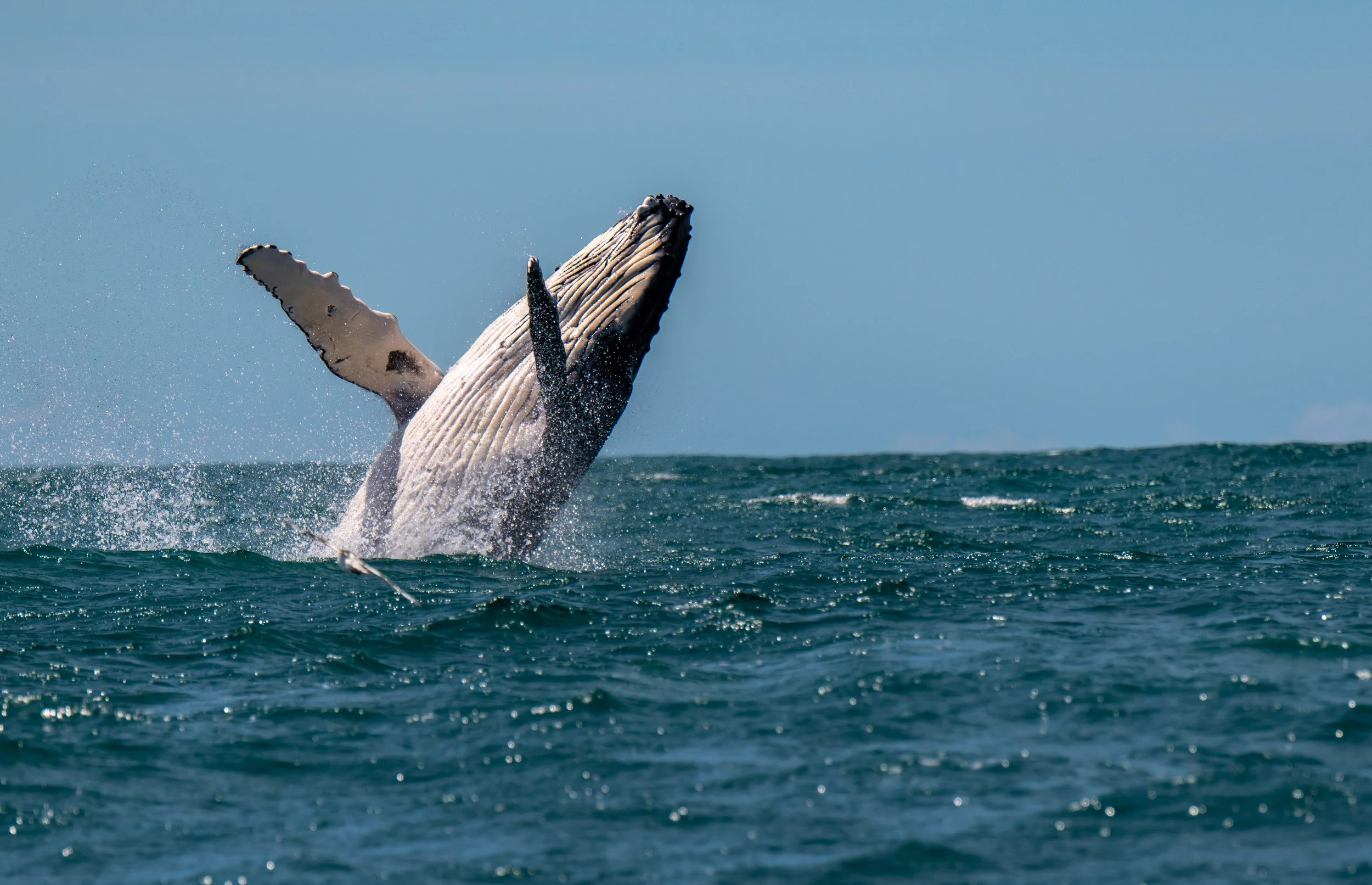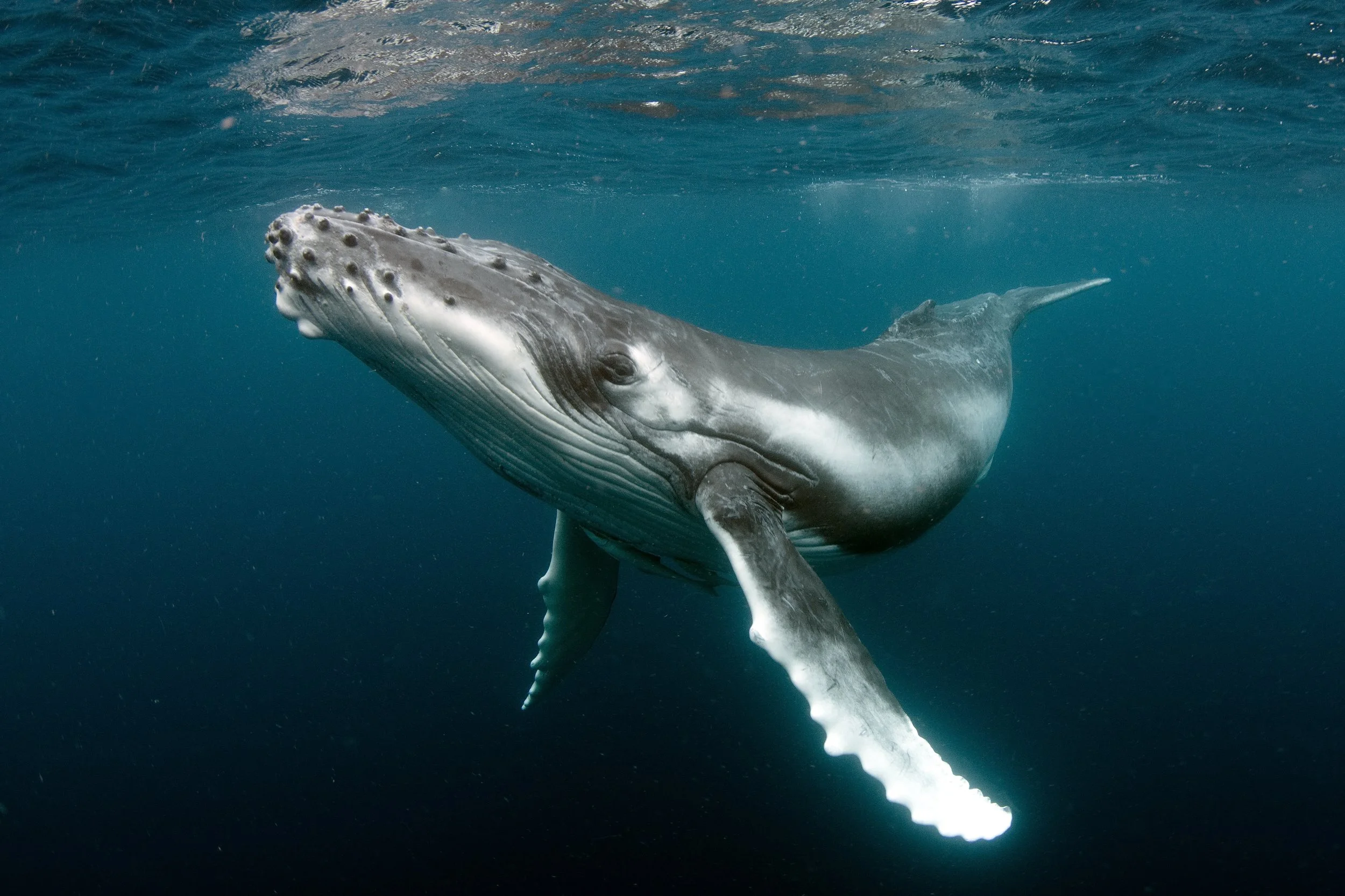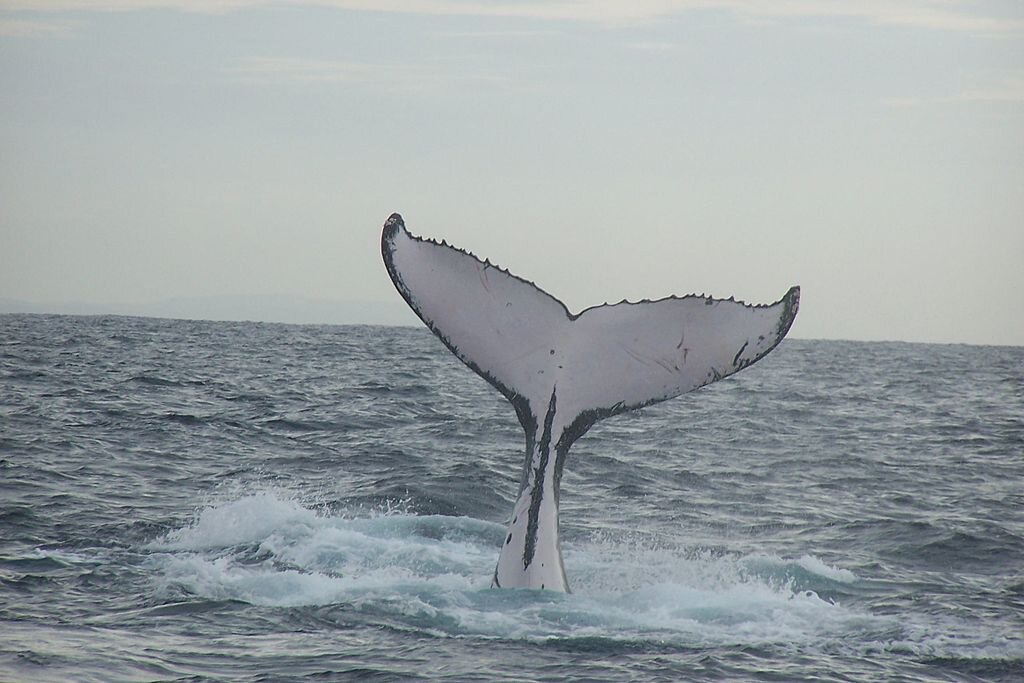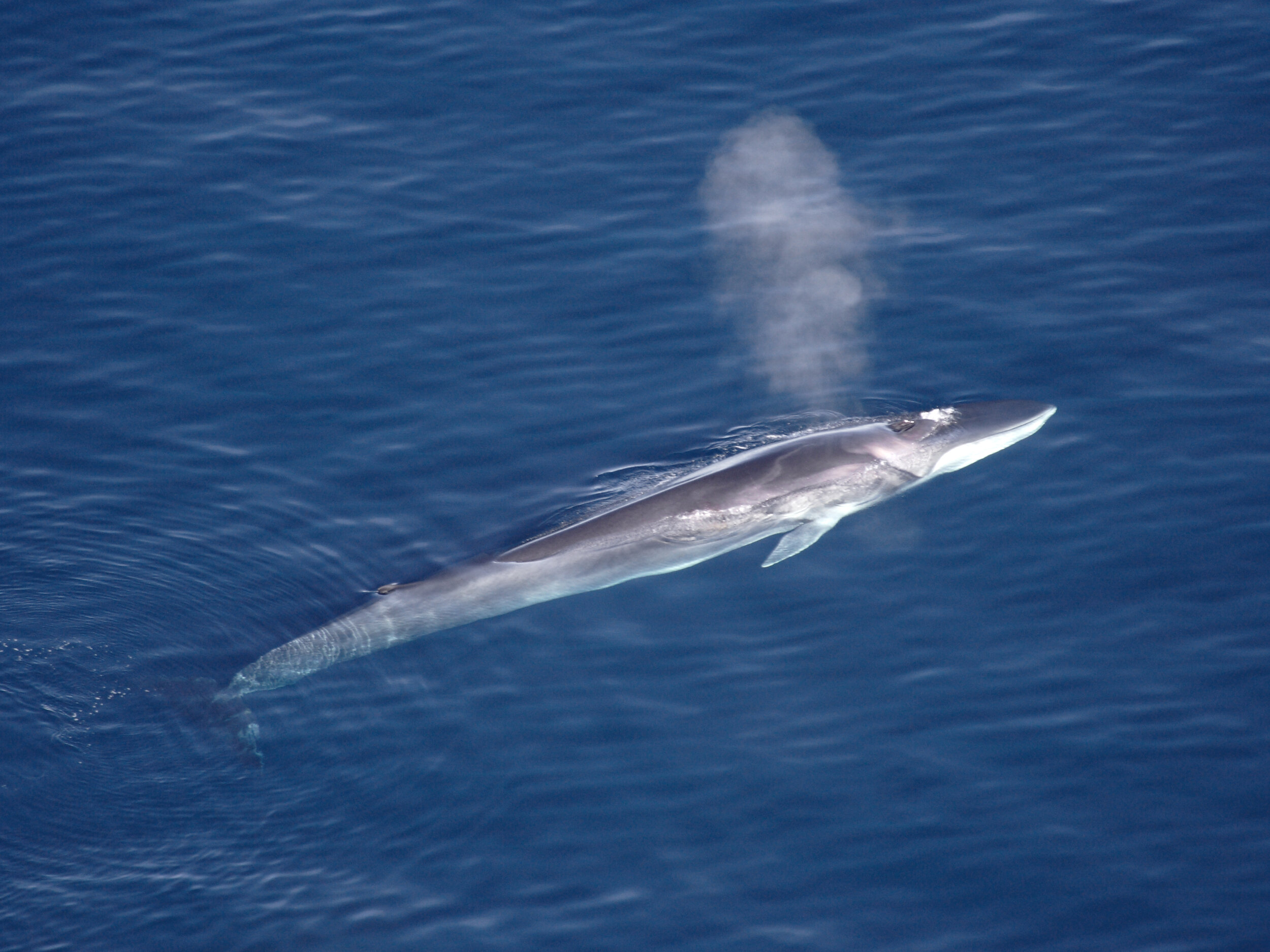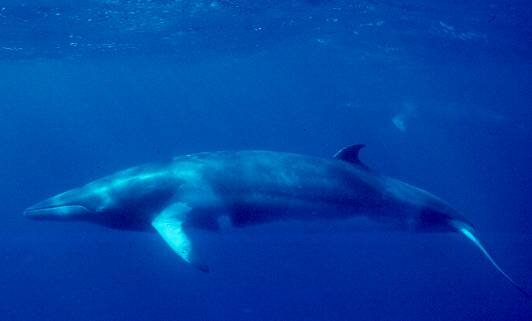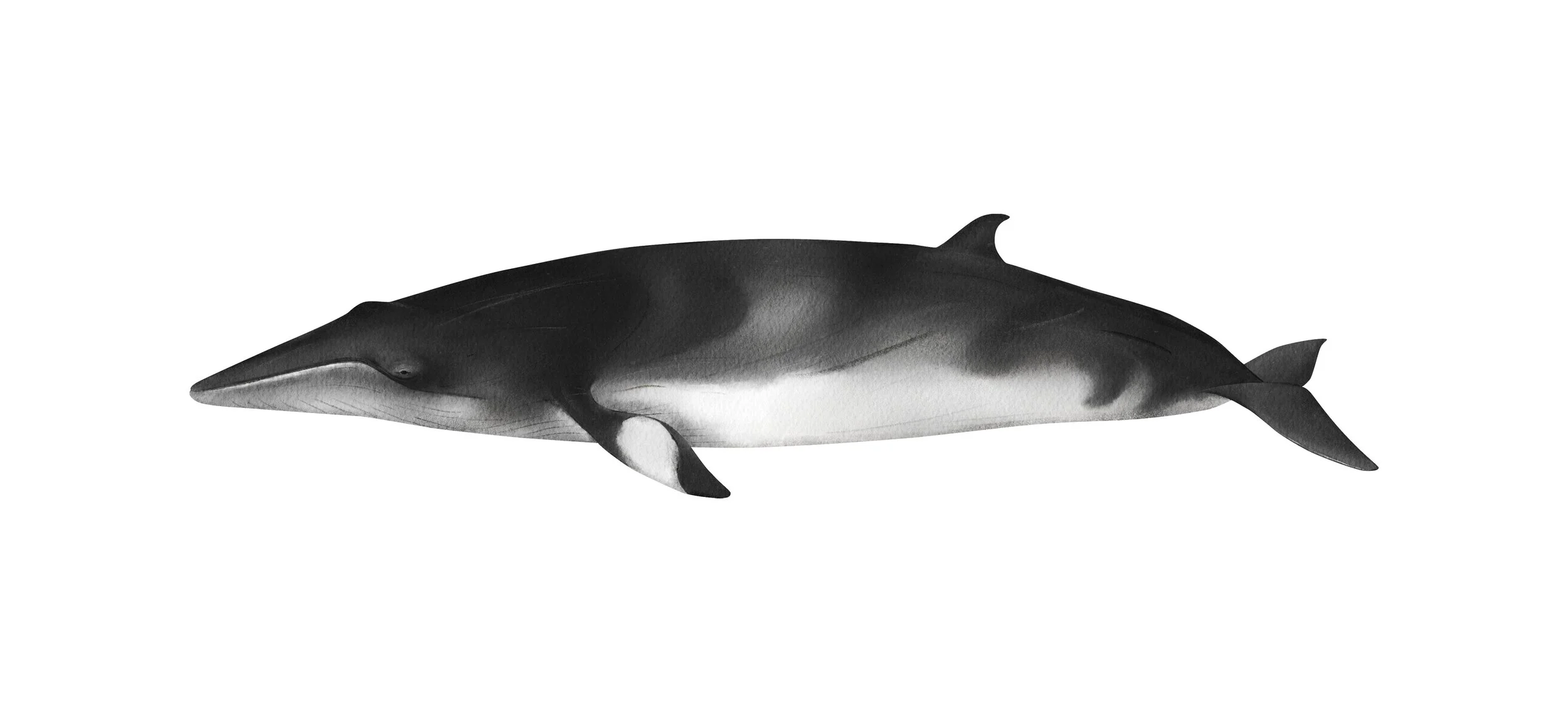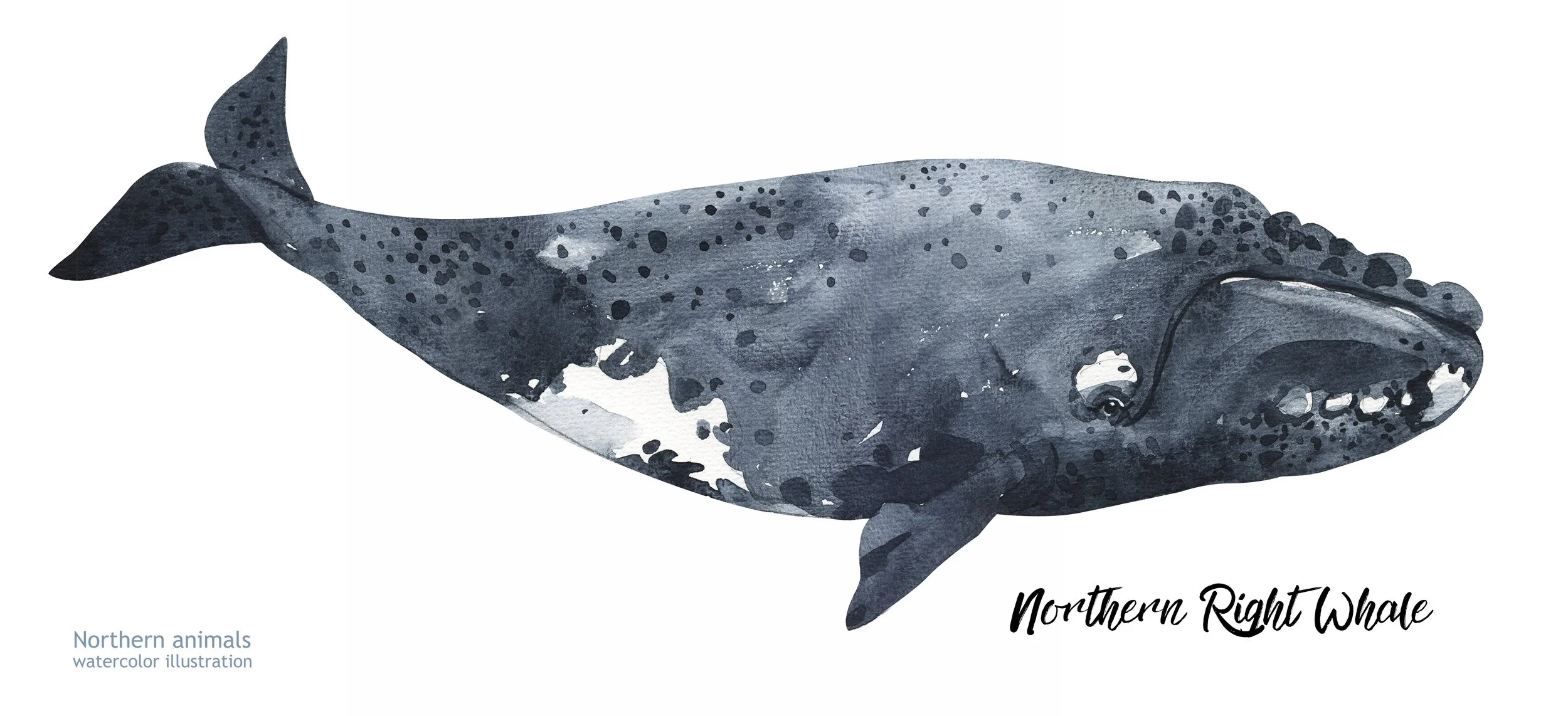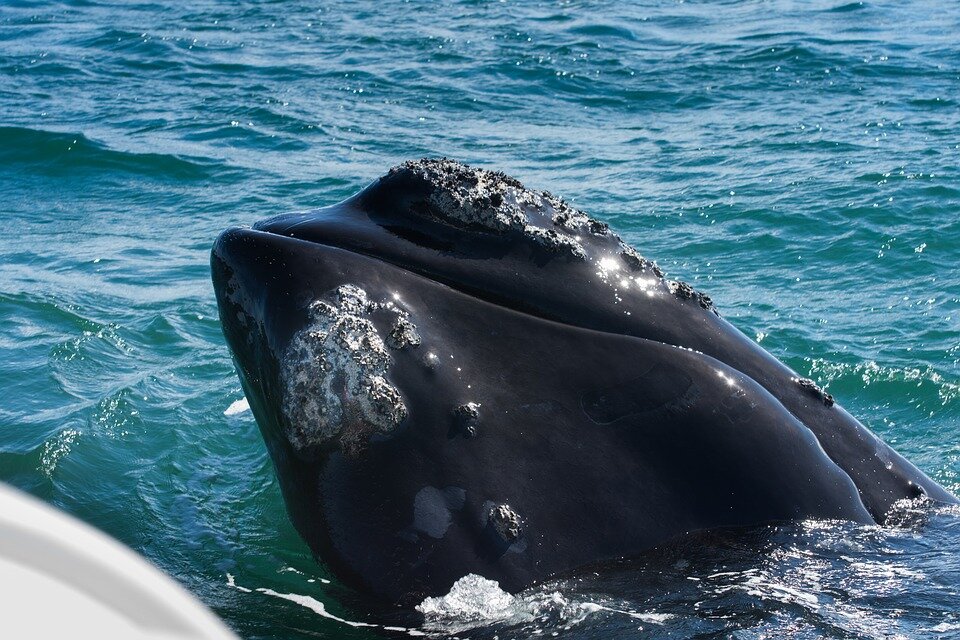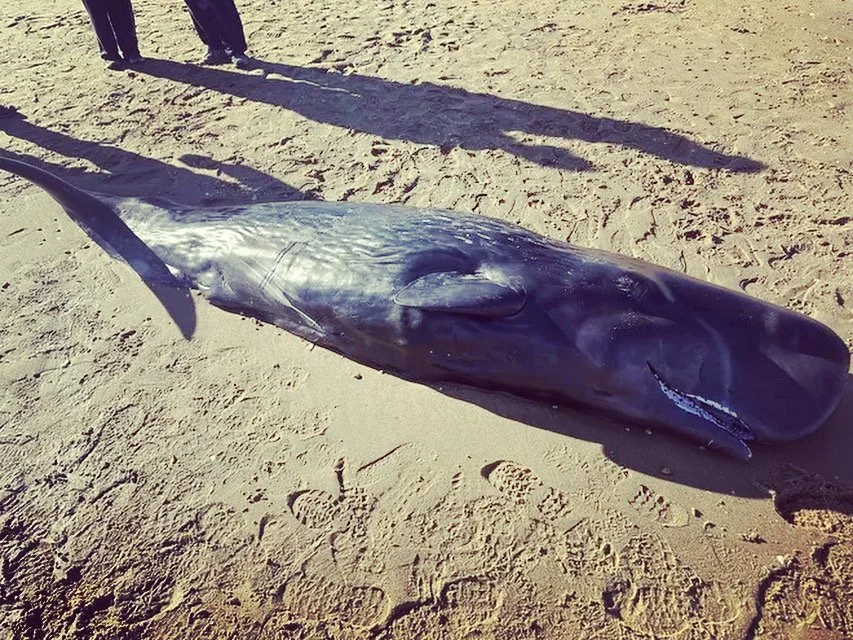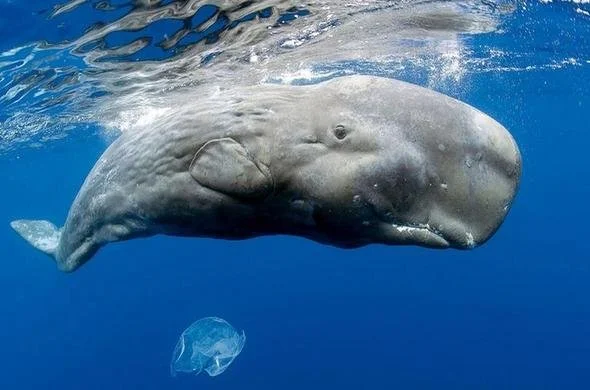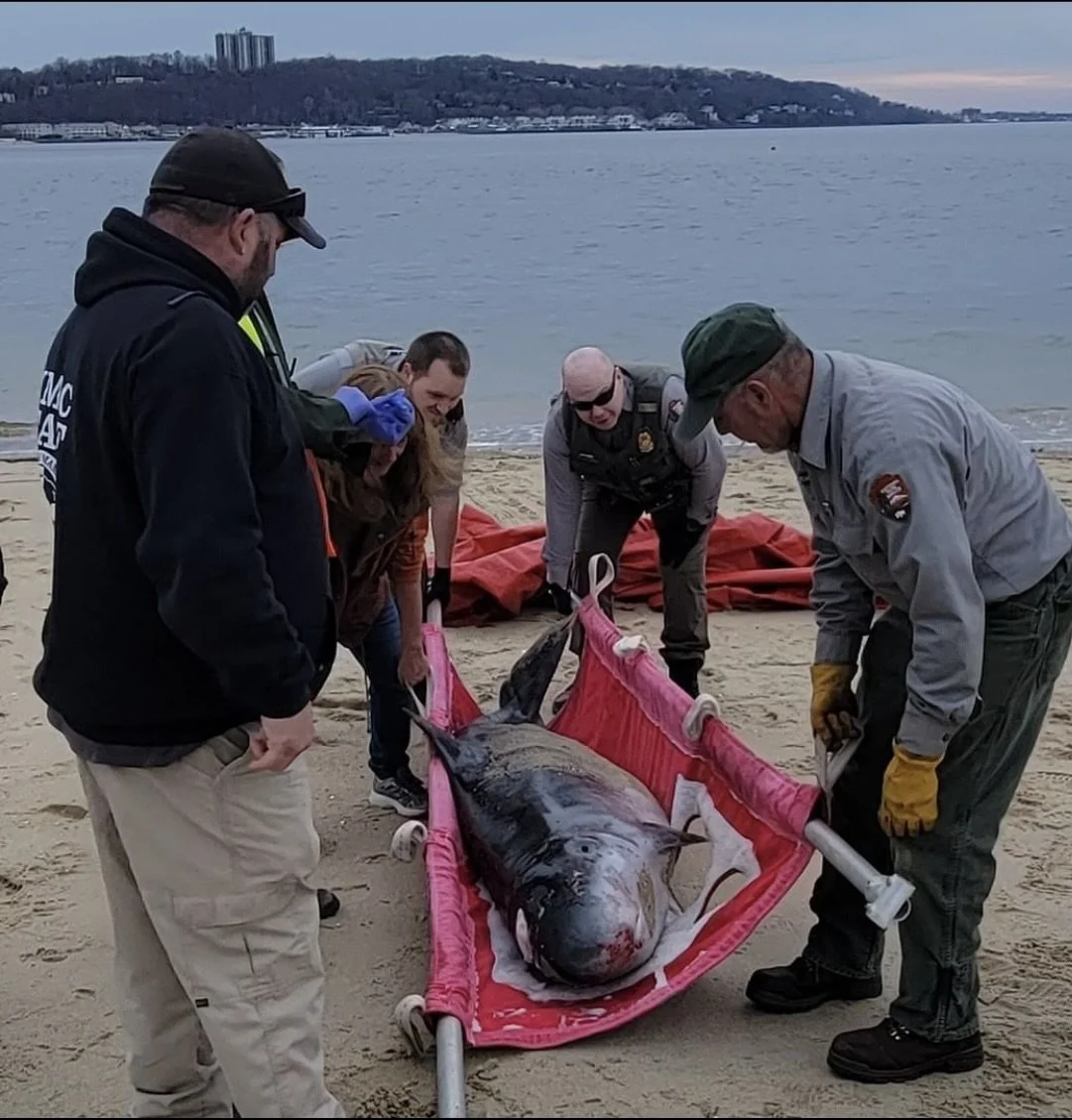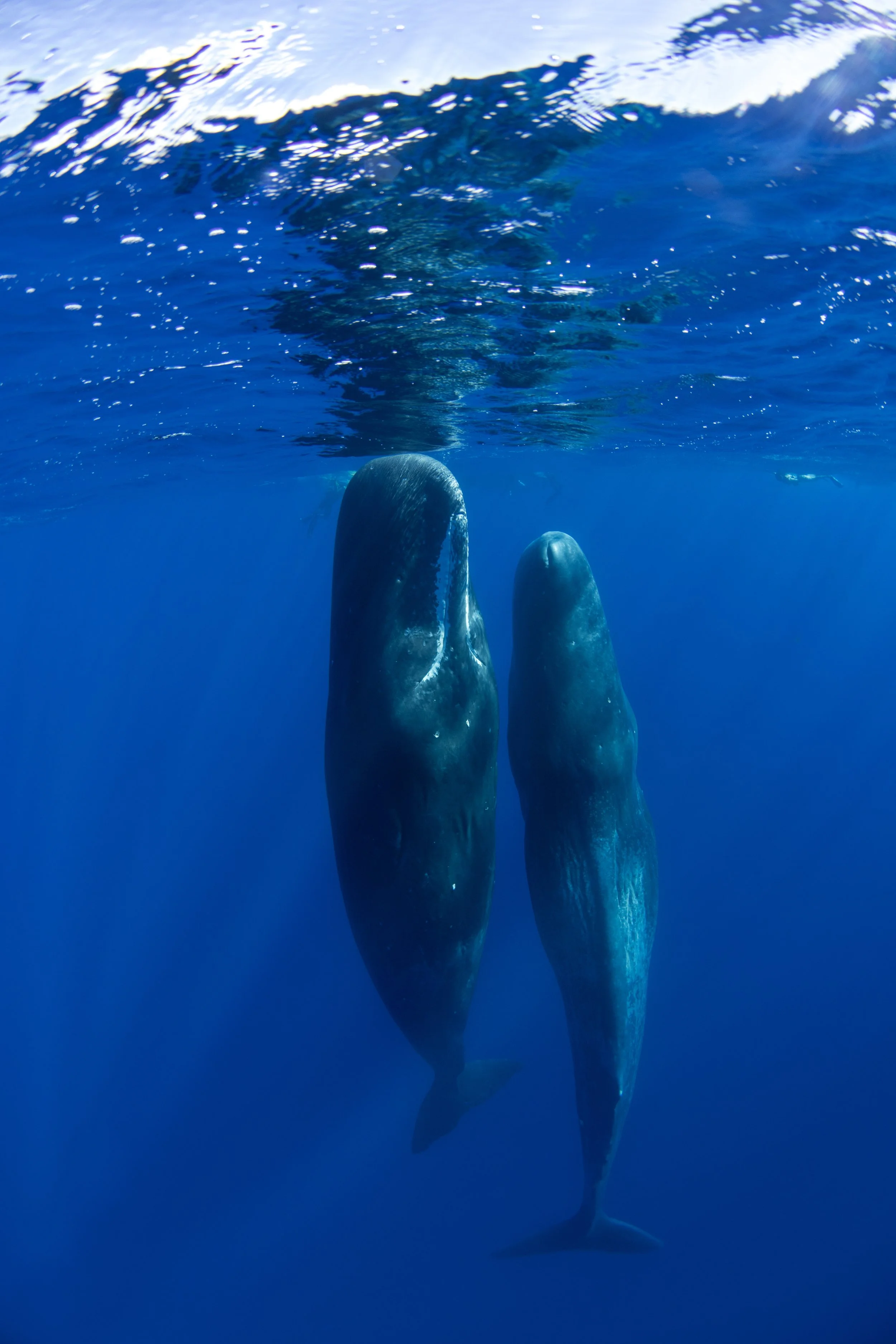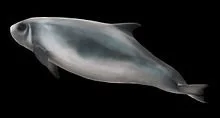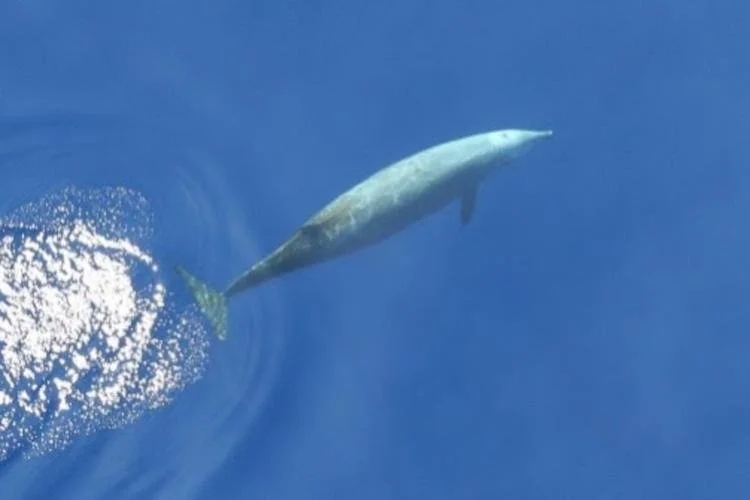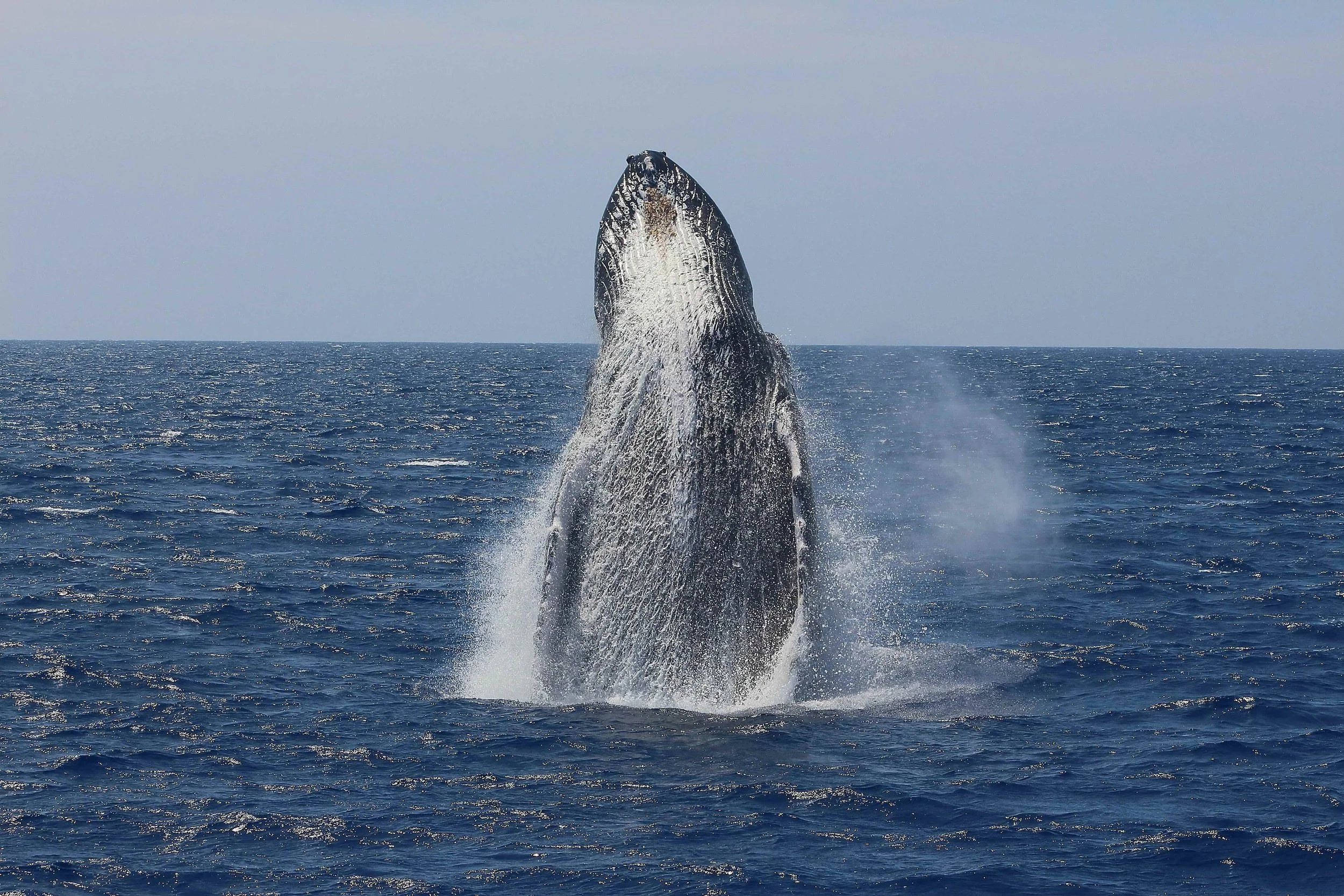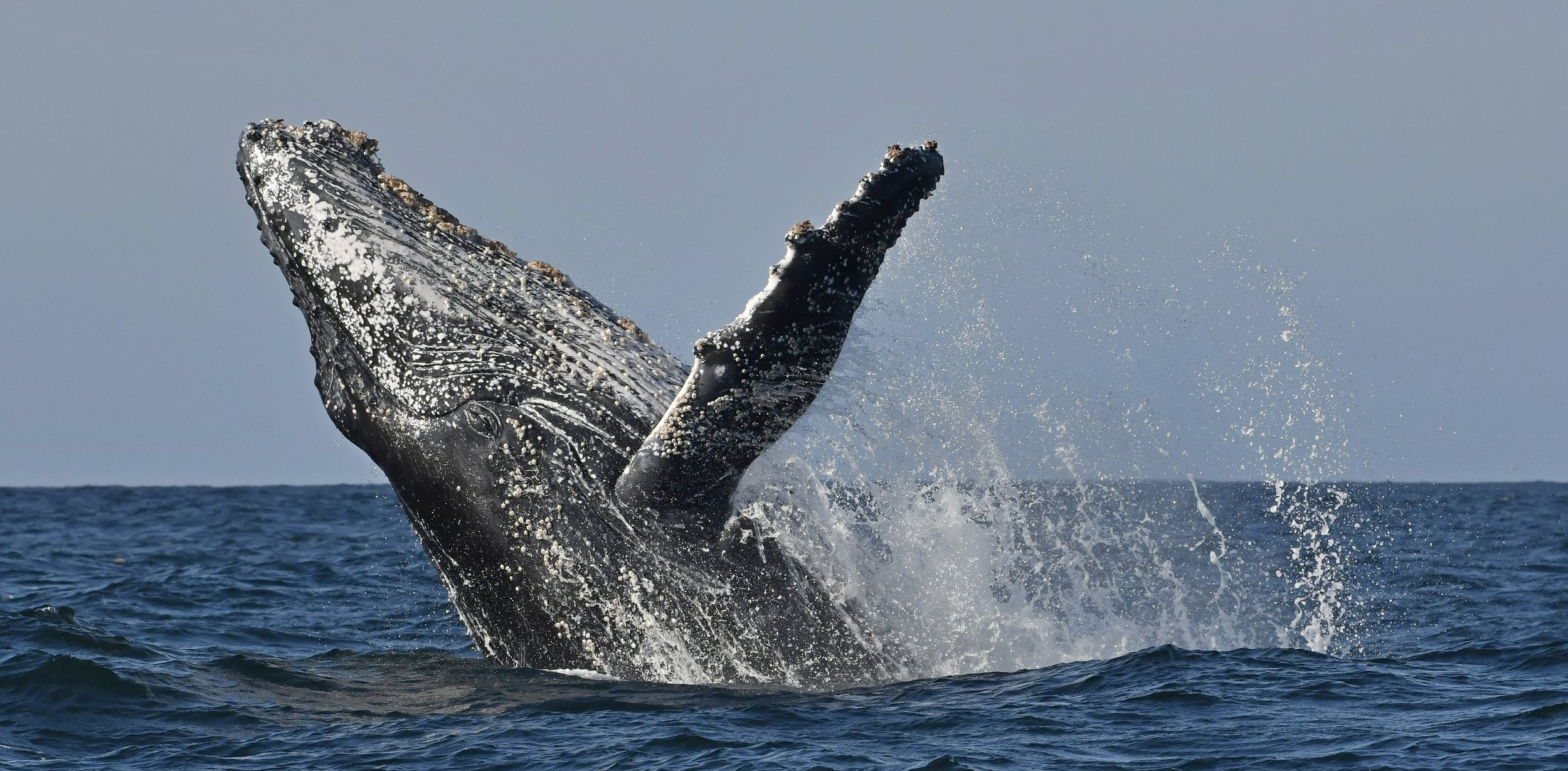
WHALES OF NEW JERSEY
Field Guide to Whales along the Jersey Shore
Many whales spotted along the Jersey Shore and coastal waters of New York State in recent years have been juvenile Humpback Whales.
No one is sure why a majority of humpback whales observed off the coasts of New Jersey and New York have been young adults. The on-going hypothesis by members of Save Coastal Wildlife Nonprofit is that juvenile humpback whales are attracted to the Jersey Shore and New York due to the abundance and variety of food resources, including small schooling fish (herring, menhaden, sand lance) and zooplankton, especially copepods, due to cleaner and more productive waters owning to the Federal Clean Water Act and from rules and regulations on both recreational and commercial fishing from NOAA Fisheries and state wildlife agencies.
In addition, the juvenile humpback whales generally do not have to compete and engage with larger adult whales for food resources along the nearby coastlines of New Jersey and New York, as they would if they were foraging for food farther north in the coastal waters of New England and Nova Scotia.
It may be the New York-New Jersey Bight is a unique & important feeding area for these teen or adolescent whales. A changing climate and warming waters in the Gulf of Maine could be forcing young whales farther south to forage for food without competing with adults, especially adult male whales.
THREATS TO WHALES ALONG THE JERSEY SHORE
The biggest threats to whale populations along the Jersey Shore include:
Entanglement in Fishing Gear: Whales, particularly young whales, can become entangled in commercial fishing gear like nets, lines, and traps, leading to injury, fatigue, and even death.
Vessel Strikes: The New York, New Jersey and Pennsylvania area is the busiest shipping area in the United States. As shipping traffic increases with larger and larger ships, the risk of whales being struck by ships also rises, causing serious injuries or fatalities.
Climate Change: Climate change impacts whales through warming ocean waters that shift and alter prey availability.
Pollution: Both marine debris (like plastic) and chemical pollution can harm whales, with plastic ingestion and toxic contamination posing serious threats.
Marine Noise: Underwater noise from shipping and boat engines, marine construction, and military sonar can disrupt whale communication, navigation, and feeding.
Overfishing: Overfishing can reduce the availability of prey species, impacting whale populations.
WHO DO YOU CALL FOR HELP IF YOU SEE AN INJURED WHALE?
If you see a whale that appears injured, entangled, sick, or being harassed by a person, in New Jersey call the Marine Mammal Stranding Center at 609-266-0538.
In New York City, call the Riverhead Foundation for Marine Research and Preservation at 631-369-9829.
These two organizations have the authority to help stranded or sick marine mammals and sea turtles. Wildlife experts with the help of trained volunteers will determine if an animal is in need of medical attention, needs to be moved from a populated area, or just needs time to rest.
If you discover a sick, injured, stranded or dead whale or marine mammal in another state, please contact your local stranding network. Information can be found here.
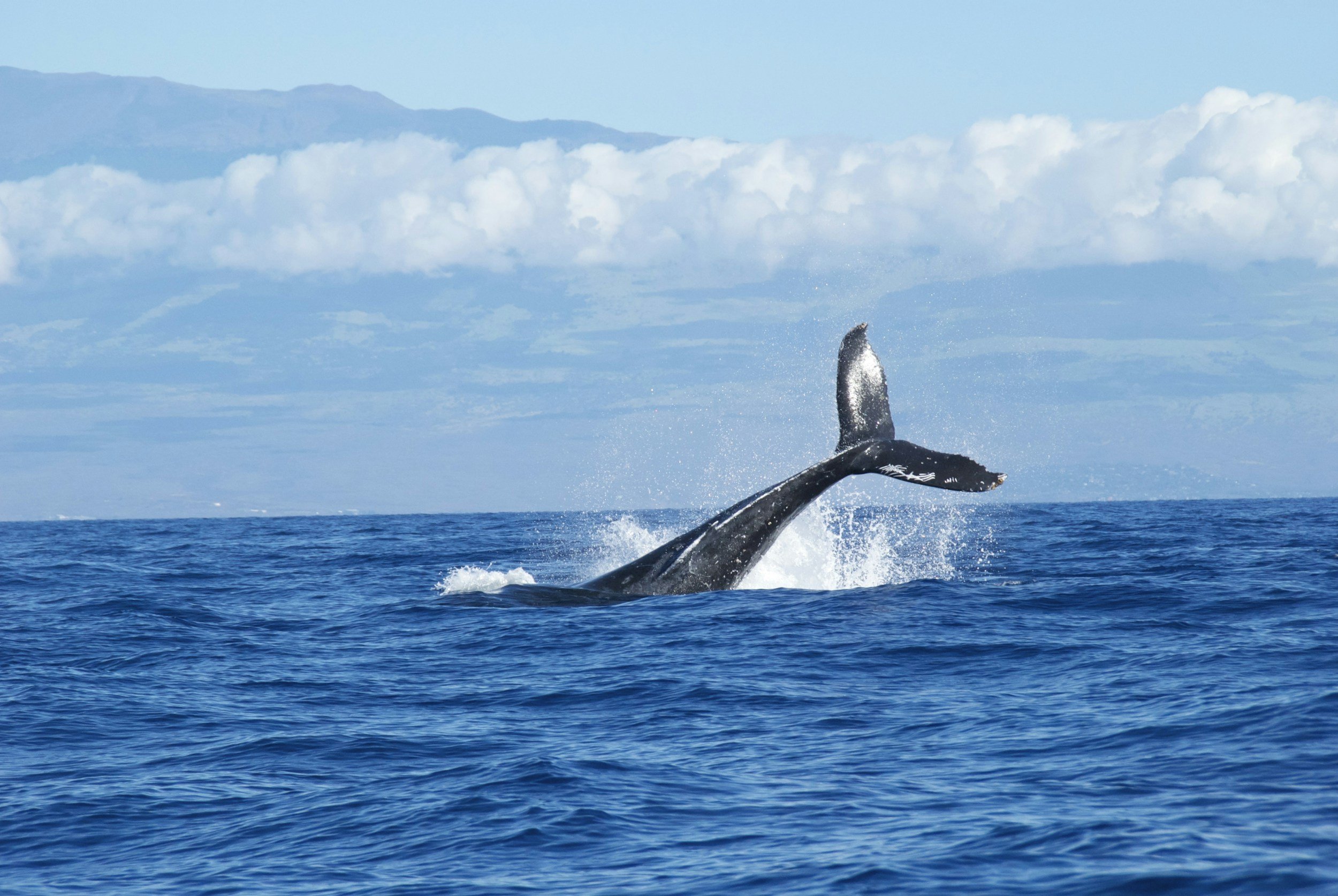
Field Guide to Whales of the Jersey Shore
Juvenile humpback whales are most common whale seen along the Jersey Shore.
Humpback Whale (Megaptera novaeangliae)
The most common whale spotted along the Jersey Shore, especially juvenile humpback whales during spring, summer, and fall. Humpback Whales are generally found close to the coast and are commonly seen at the surface while foraging for food.
Size: Adults 36 to 52 feet long; females slightly larger than males. Weighs between 30 to 45 pounds. At birth, a humpback whale is approximately 16 feet long and weighs 2 tons. Most whales observed along the Jersey Shore are between 25 to 40 feet long.
Body: Plump body. Series of fleshy knobs on rostrum and lower lip. Black on the dorsal side with long flippers (about one-third of the body length) and broad flukes. Variable amount of white on throat and belly with ventral throat grooves.
At close range, the somewhat rounded head shows several rows of bumps, about the size of tennis balls on the top of the rostrum and along the lower jaw. These are overgrown hair follicles.
The shape and color of the tail or fluke is important to observe. Distinctive markings on the underside of flukes are used to identify individual humpbacks. The coloration ranges from white to black and every color in-between.
Dorsal fin: Small and raised hump in front. Seen at same time as blow.
Blow: Board and bushy and somewhat pear-shaped, up to 10 feet high.
Dives: Slow dive sequence. Has 5 to 12 blows separated by about 10 to 30 seconds. Dives will last from 5 to 12 minutes.
Feeding: Sometimes use bubble nets to corral prey. Lunge and gulp concentrated prey.
Life History: Found alone or in groups of 2 to 12. Sexually mature between 4 to 6 years. Single calf born every 2 to 3 years in the warm tropical waters in the Caribbean Sea throughout winter, but typically January to April.
Life span: May live up to 48 years.
Status: Population increasing; and may have recovered to perhaps pre-whaling levels. Listed as Endangered in the State of New Jersey.
Fin Whale also known as finback (Balaenoptera physalus)
The second largest whale in the world after the Blue whale; and the second most large whale observed (after the humpback) and largest whale seen along the Jersey Shore.
Size: Adults 56 to 80 feet and weighing up to 70 tons. At birth a fin whale is approximately 21 feet and weighs 2 tons. Most fin whales observed along the Jersey Shore are between 40 to 60 feet long.
Body: Long and sleek with flat V-shaped rostrum. Distinct ridge on back.
Color: They are the only whale with a lower white right jaw and baleen, and a lower dark left jaw and baleen. They have a light chevron pattern stretching from the right side of the month across the back.
Dorsal fin: Up to 2 feet tall. After each breath they raise their back and their dorsal fin, five to six feet above the water.
Blow: Tall, elliptical, columnar, 18 to 20 feet high or higher.
Dive: Unlike humpbacks, fin whales generally do not raise their flukes. Blow 4 to 5 times at 10 to 20 seconds apart, then dive for 5 to 15 minutes.
Behavior: Single or in groups of 2 to 10. Often associated with dolphins. A fast swimmer, with speeds up to 20 mph. May breach. Winter breeding and calving grounds are unknown in the Atlantic Ocean.
Feeding: Gulps large swarms of food including small fish, squid, and zooplankton. Feeds often while swimming on their right side.
Status: Listed as an endangered species in the United States; and listed as endangered in the State of New Jersey.
Common Minke Whale (Balaenoptera acutorostrata)
Minke whales are the smallest of the baleen whales, and the smallest baleen whale seen along the Jersey Shore. These whales are shy and prefer cooler temperate waters to tropical waters.
Size: Adults to 29 to 33 feet long and up to 10 tons; females slightly larger than males. At birth a minke whale is approximately 9 feet.
Body: the easiest way to identify a minke whale from other baleen whales is by their tradition to lift their pointed snout and head out of the water when they surface.
The body is small and seek, with a sharply pointed head and flat rostrum. Flippers are pointed. Flukes broad.
Color: Black or steel-gray. All of their baleen is white. White bands are found on both flippers.
Dorsal fin: Prominent and hooked or curved like a sickle. Located two-thirds back on the body.
Blow: Low, bushy and difficult to see. Will reach 4 to 8 feet.
Dive: It appears 2 to 4 minutes at the surface, 30 to 60 seconds apart. Then dives between 2 to 20 minutes
Behavior: Minke is a fast moving whale. It will often approach a boat. It can be found alone or in groups of 2 to 3. May enter bays and harbors.
Feeding: Feeds by side-lunging into schools of prey and gulping large amounts of water. Schooling fish, squid and zooplankton.
Life history: Sexually mature at 6 to 8 years. Single calf every 1 to 2 years. Probably breed winter to early spring. Breeding area is unknown.
Status: Minke whales in the United States are not endangered or threatened, but they are protected under the Marine Mammal Protection Act. There is no estimate for North Atlantic population.
Northern Right Whale (Eubalaena glacialis)
Northern right whales are the most endangered large whale in the world with a total population of less than 400 individuals in the western North Atlantic. Although it is one of the rarest animals in the world and extremely uncommon to spot right whales along the Jersey Shore, these whales do migrate seasonally along Atlantic coastal waters including the coast of New Jersey.
Size: Adults 43 to 60 feet long and weighing up to 100 tons; females larger than males. At birth, a Northern right whale is approximately 15 feet long.
Body: Robust body with a large head. Wart-like callosities (irregular thick and hard patches of keratinized tissues) on rostrum, lower lip and around eyes. These callosities form in many places humans have facial hair. Keratin is a fibrous proteins and an important ingredient in making up hair, nails, feathers, horns, claws, hooves, and the outer layer of skin among vertebrates.
Wart-like callosities on the rostrum of a right whale.
Right whales have no throat grooves. The tail is triangular in shape and up to 19 feet wide, with a deep median notch.
Color: Mostly black, with some degree of white on belly.
Dorsal fin: Right whales lack a dorsal fin.
Blow: V-shaped, short and bushy up to 16 feet high.
Dive: Blow 5 to 10 times at 15 to 30 second intervals. Will dive for 5 to 15 minutes. The terminal or a deep dive is usually preceded by the raising flukes.
Behavior: Highly mobile. Passive and will often approach boats. Will swim alone or in groups of 2 to 3, but larger groups in productive feeding areas.
Feeding: Their primary feeding area is off the coast of New England. May be seen skim-feeding near surface with mouth open on dense concentrations of zooplankton. Feeds primarily on copepods. It is interesting to note that right whales are some of the heaviest of the great whales per foot in length, but feed upon some of the smallest animals in the ocean.
Life history: Females sexual mature at 7 to 10 years. Pregnant females migrate to the southeast U.S. coast from Cape Fear, North Carolina, to below Cape Canaveral, Florida to give birth during the winter. A single calf is born every 3 to 4 years. Northern right whales may live up to 70 years, but data on their average lifespan is limited.
Status: Extremely endangered. According to NOAA Fisheries:
“In recent years, we've recorded more deaths among adult females than males. There are now more males than females in the population, and that gap is widening. Females, by going through the energetic stress of reproduction, are more susceptible than males to dying from entanglement or vessel strike injuries. Today, we believe there are about 95 reproductively active females.”
Sperm Whale (Physeter macrocephalus)
Sperm whales have a global distribution and are found in all of the world’s oceans.
All Sperm whales get their name from a spermaceti organ in the head that contains a waxy fluid that is important in sound production.
Description: The sperm whale is the largest of the toothed whales. They exhibit sexual dimorphism with adult male sperm whales weighing up to three times that of an adult female, and has a larger and more square head.
Distribution: Males and females have different distributions. Adult males are found in cooler waters near the North and South Poles. Females and immature sperm whales are typically observed in the deeper tropical and subtropical ocean waters, including the Western Atlantic Ocean. Adult males migrate to warmer water for breeding.
Diet: Sperm whales have teeth, not baleen. Sperm whales are known to eat three times their body per day. Sperm whales forage in deep ocean waters to eat primarily on cephalopods, including large squids as the giant squid and colossal squid. Sperm whales also forage on fish, especially deep ocean fish.
Life history: Sperm whales live for at least 60-70 years and probably longer.
Reproduction: Females typically give birth to one calf every four to six years with longer time intervals between births as females age.
Conservation: Globally listed as endangered. Commercial whaling from 1800 to the 1980s greatly decreased sperm whale populations worldwide. The International Whaling Commission placed a moratorium on commercial whaling in 1986. The species is still recovering.
Threats: Water pollution, including plastics. Ship strikes and ghost fishing driftnets.
Fun Fact: The largest brain of any mammal is found in the sperm whale.
On Monday, December 5, 2022, a 12-foot infant sperm whale washed ashore dead along Raritan Bay in the Borough of Keansburg, NJ. The cause of death was undetermined. Staff at the Marine Mammal Stranding Center of NJ stated the infant whale was still nursing at that stage of life and likely got separated from its mother before it had the ability to feed itself and thus died from hunger.
This whale originally washed up on December 5 at Gilgo Beach in the Town of Babylon in Suffolk County, NY, but local people wrongly pushed the whale back into the water before biologists could respond.
On Tuesday, December 13, 2022, a 32-foot adult whale was found dead on Rockaway Beach, Queens, New York City. The sperm whale was found along the beach’s shoreline, near Beach 73rd Street, around 9 a.m. The whale was believed to be a female sperm whale, between the age of three and five.
This sperm whale was the second adult sperm whale to become “stranded” in the New York City in 2022. On Oct. 21, the Atlantic Marine Conservation Society “euthanized and examined” a sperm whale calf that washed up in the Town of Southampton, located in southeastern Suffolk County, on the South Fork of Long Island, New York.
Pygmy Sperm Whale (Kogia breviceps)
Very little is known about Pygmy sperm whales. They are highly elusive in the ocean, and usually avoid vessels and planes, which are the tools wildlife biologists and scientists use to measure population size of cetaceans. Additionally, the whales only come to the water’s surface when the sea and weather conditions are very calm. As a result, scientists rarely see pygmy sperm whales in the ocean, making it very difficult to estimate their population size or current population status.
Pygmy sperm whales can be found in tropical and temperate ocean waters. Their diet is composed primarily of cephalopods and deep-water fish and shrimp. The anatomy combined with pairs of tiny teeth on the lower jaw suggest that suction-feeding is used to ingest prey.
Pygmy sperm whales have a short life span and live only to about 20 years.
Threats: Underwater noise. Pollution, especially plastic debris, ship strikes, bycatch, and ghost fishing driftnets.
In December 2021, a six-month old female calf pygmy sperm whale washed up sick and dying on the bayside of the Sandy Hook peninsula along the Jersey Shore. Unfortunately, the whale did not survive. It died while being carried off the beach. A necropsy reviled the whale died from cardiac issues. Picture from the Marine Mammal Stranding Center of New Jersey
Family of sperm whales sleeping in the ocean
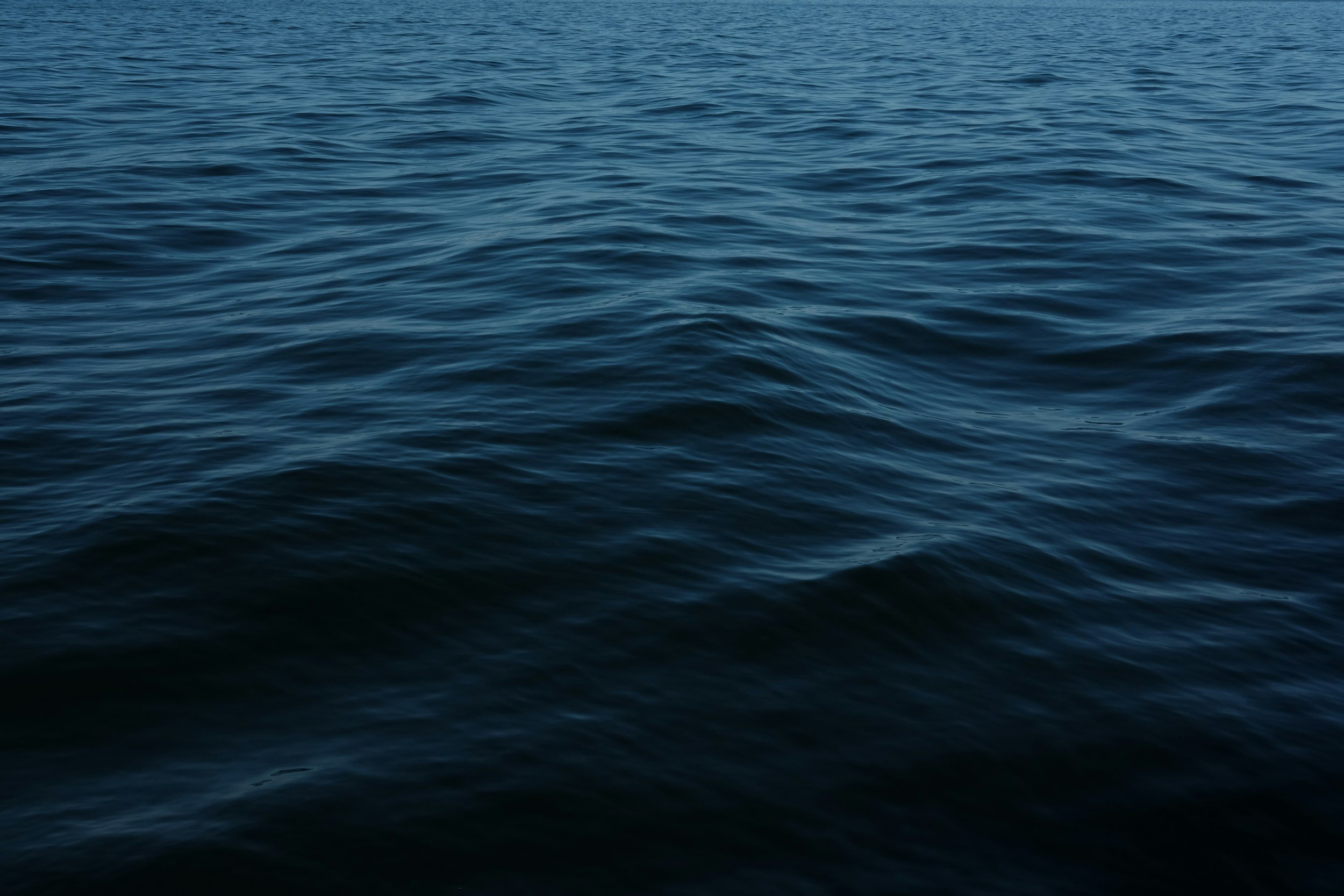
Rare Visitors to the Jersey Shore
The following whales are infrequent travelers to the Jersey Shore. Some species can be found in deeper ocean waters, while others are scarce or we have very little information about their life cycle.
Dwarf Sperm Whale (Kogia sima)
Very little is known about Dwarf Sperm Whales. Sightings rarely occur. It is also difficult to see these whales when they surface to breathe unless sea and weather conditions are very calm. As a result, scientists rarely see dwarf sperm whales at sea. This makes it difficult to estimate their minimum population size or current population status.
Dwarf Sperm Whales can be found in tropical and temperature ocean waters. The whale is most often spotted around Hawaii.
Based on prey remains of fish and shrimp near South Africa and Taiwan, the dwarf sperm whale is thought to inhabit the continental shelf edge and slope, plus it may be more common near coastal areas if the continental shelf than the pygmy sperm whale.
Dwarf sperm whales live to only about 20 years.
Threats: Underwater noise, plastic and oceanic debris, bycatch and ghost fishing driftnets.
Cuvier’s Beaked Whale (Ziphius cavirostris)
Almost nothing is known about the life history and ecology of this species. Sadly, carcasses are the best clues we have for all species of the mysterious beaked whales.
Cuvier’s beaked whales have a cosmopolitan distribution and can be found in most oceans and seas worldwide. Most of the distribution information is based on stranding records.
Cuvier’s beaked whales can be found in temperate, subtropical, and tropical waters. They prefer deep pelagic waters (usually greater than 3,300 feet) of the continental slope and edge, as well as around steep underwater geologic features like banks, seamounts, and submarine canyons. Recent surveys suggest that beaked whales, like this species, may favor oceanographic features such as currents, current boundaries, and core ring features.
The diet of the Cuvier’s Beaked Whale appear to be opportunistic.
Threats: Ocean noise, especially from naval sonar, bycatch and entanglement in fishing nets, ingestion of plastic debris.

